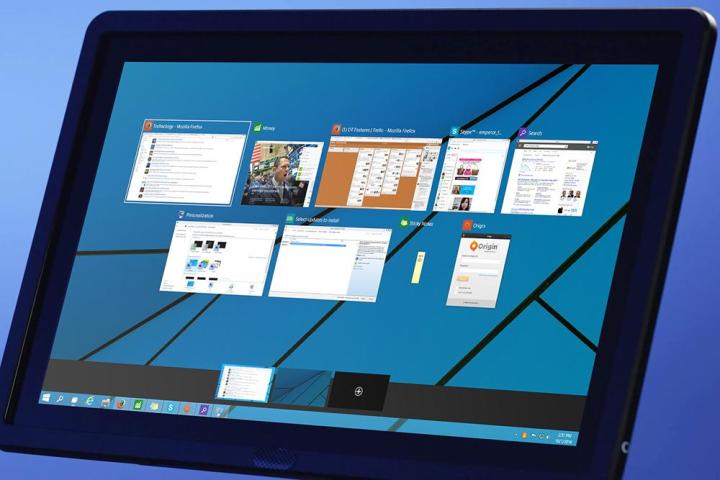
One of the new features coming to a future test build is a re-imagining of track-pad gestures. Demonstrated by Microsoft executive Joe Belfiore at the Microsoft TechEd Europe 2014 keynote event in Barcelona, Spain, the improved touch-pad multi-finger gestures look a lot like stuff you can pull off in OS X right now.
With these updates, all open windows can be dismissed with the downward flick of three fingers on a touch-pad. Three fingers bring everything back up with a swift upward movement as well. Plus, a three-finger swipe up with a bunch of windows open seamlessly accesses Task View, which then lets you switch back and forth between multiple desktops.
Do any of these sound familiar, Mac users? Well, sure, since the very Task View feature has been accused of being a clone of the Mission Control aka Exposé function in OS X. Of course, there’s nothing wrong with finding inspiration in your rivals’ work, as long as it makes your product better, and you don’t steal lines after lines of source code.
Of course, that’s not the case in Windows 10, which is a very unique operating system in more ways than one. Besides, Apple has borrowed features from Microsoft in the past, so this may be a tit for tat approach on Redmond’s part.
While it’s very much a work in progress, the follow up to Windows 8 was unveiled late last month, and will be released to the public in a final, polished form sometime next year. In the meantime, anyone can test the beta by signing up for the Windows Insider Program, and downloading the Technical Preview.
The nifty gestures will be introduced in Build 9865 of Windows 10, which is coming soon to all eager beta testers.
To see the upcoming gestures in action, skip to the 26 minute mark in the video below to check them out.
Editors' Recommendations
- How to factory reset Windows 10 or Windows 11
- How to uninstall Windows 11 and rollback to Windows 10
- 10 Mac trackpad gestures that everyone should be using
- How to downgrade from Windows 11 to Windows 10
- How to password protect a folder in Windows and macOS


